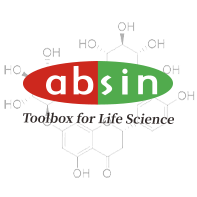Product Details
Product Details
Product Specification
| Usage |
Sample Collection, Processing, and Storage Methods 1. Serum: Use pyrogen- and endotoxin-free tubes. Avoid any cell stimulation during handling. After blood collection, centrifuge at 3000 rpm for 10 minutes to quickly and carefully separate the serum from the red blood cells.2. Plasma: Anticoagulate with EDTA, citrate, or heparin. Centrifuge at 3000 rpm for 30 minutes, and remove the supernatant. 3. Cell Supernatant: Centrifuge at 3000 rpm for 10 minutes to remove particles and aggregates. 4. Tissue Homogenate: Add an appropriate amount of saline to the tissue and mash. Centrifuge at 3000 rpm for 10 minutes, and remove the supernatant. 5. Storage: If samples are not tested immediately after collection, aliquot them into single-use aliquots and freeze at -20°C. Avoid repeated freeze-thaw cycles. Thaw at room temperature, ensuring that the sample is evenly and thoroughly thawed. Reagent Preparation Dilution of 20× Wash Buffer: Dilute with distilled water at a ratio of 1:20, i.e., add 1 part 20× Wash Buffer to 19 parts distilled water. Plate Washing Method 1. Manual Plate Washing: Shake out all liquid from the wells, fill each well with wash buffer, let stand for 1 minute, shake out all liquid from the wells, pat dry on absorbent paper, and wash the plate five times.2. Automatic Plate Washer: Fill each well with 350 μL of wash buffer, soak for 1 minute, and wash the plate five times.
2. Set up negative and positive control wells and sample wells. Add 50 μL of each negative and positive control to each well. 3. Add 50 μL of the sample to be tested to the sample well. 4. Then, add 100 μL of horseradish peroxidase (HRP)-conjugated detection antibody to each of the negative and positive control wells and sample wells. Seal the wells with sealing film and incubate at 37°C in a waterbath or incubator for 60 minutes. 5. Discard the liquid, pat dry on absorbent paper, fill each well with wash buffer, let stand for 1 minute, discard the wash buffer, pat dry on absorbent paper, and repeat this process five times (a microplate washer can also be used). 6. Add 50 μL of substrates A and B to each well and incubate at 37°C in the dark for 15 minutes. 7. Add 50 μL of stop solution to each well and measure the OD value of each well at 450 nm within 15 minutes.
2. Cut-off value calculation: Cut-off value = average value of negative control wells + 0.15 3. Negative judgment: If the OD value of the sample is less than the cut-off value, the sample is negative. 4. Positive judgment: If the OD value of the sample is greater than the cut-off value, the sample is positive.
|
||||||||||||||||||||||||||||||
| Species Reactivity | Monkey | ||||||||||||||||||||||||||||||
| Theory | The kit uses a double-antibody, one-step sandwich enzyme-linked immunosorbent assay (ELISA). Samples and HRP-labeled detection antibodies are added sequentially to microwells pre-coated with AAV antigens. After incubation and thorough washing, the sample is developed using the substrate TMB. TMB converts to blue under the catalysis of peroxidase and to yellow under the action of acid. The absorbance (OD) is measured at 450 nm using a microplate reader and compared with the cut-off value to determine the presence of adeno-associated virus (AAV) in the sample. | ||||||||||||||||||||||||||||||
| Composition |
|
||||||||||||||||||||||||||||||
| General Notes | Store the kit at 2-8°C and equilibrate to room temperature for 20 minutes before use. Crystallization of the concentrated wash buffer after removal from the refrigerator is normal. Heat in a water bath to completely dissolve the crystals before use. Strips not used in the experiment should be immediately returned to the ziplock bag and sealed (low-temperature drying) for storage. Pretreated samples do not require dilution; simply add 50 μL. Strictly follow the incubation times, addition volumes, and order specified in the instructions. Shake all liquid components thoroughly before use. | ||||||||||||||||||||||||||||||
| Storage Temp. | Unopened test kit, stored at 2-8°C, has a shelf life of 6 months. |


